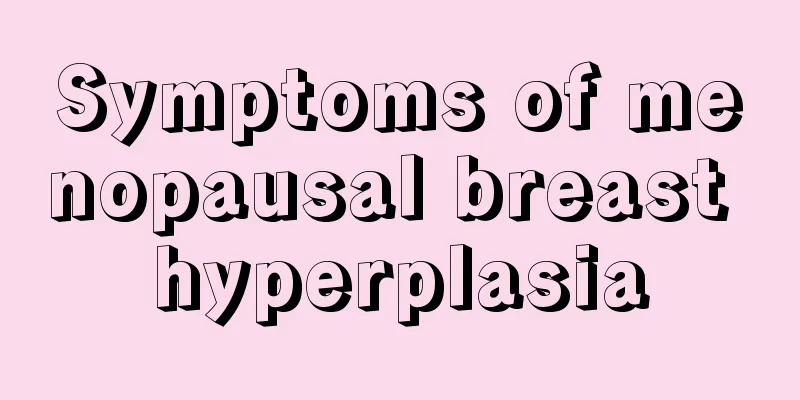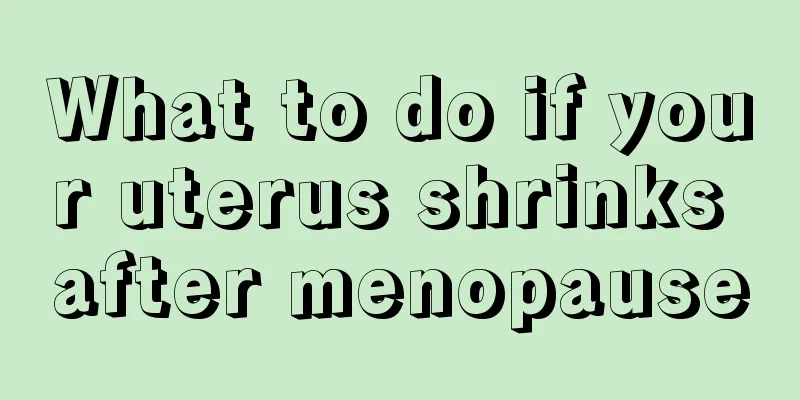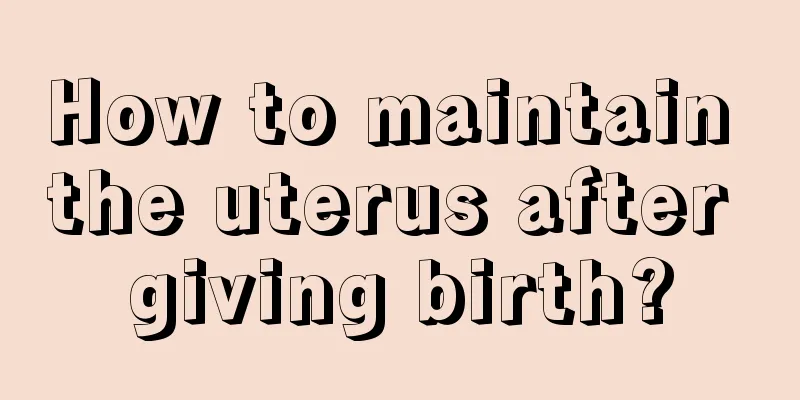Symptoms of menopausal breast hyperplasia

|
Breast hyperplasia is a common breast disease in women. It is usually benign, but in rare cases it may worsen. Breast hyperplasia can occur in women of different age groups, especially middle-aged women. In addition, some menopausal women also experience breast hyperplasia. So what are the symptoms of breast hyperplasia in menopausal women? There are four key breast diseases that may occur. Let's take a look. The manifestations of breast hyperplasia are different at different age groups. Among them, for postmenopausal women, that is, women in menopause, when breast hyperplasia occurs, there are mainly four symptoms: 1. Cystic space-occupying lesions: Because the breast gland ducts of women during menopause shrink, more obvious cystic space-occupying lesions will appear when breast hyperplasia occurs. Its essence is a disorder of the normal structure of the breast caused by physiological hyperplasia and incomplete restoration. Cystic changes are generally rare, mostly dominated by glandular duct hyperplasia, and the risk of deterioration is increased compared to normal women. 2. Pain: Most cases of breast hyperplasia are accompanied by mild or severe pain. The same is true for breast hyperplasia in menopausal women. In addition to the appearance of lumps after the onset of the disease, breast pain symptoms will also occur. The severity of the pain has nothing to do with the presence or extent of the lump. The pain can spread, such as radiating to the armpits, shoulders and back. 3. Nipple discharge: Not all women with menopausal breast hyperplasia will experience this symptom. For a very small number of women with menopausal breast hyperplasia, some may have nipple discharge. This condition should be taken seriously to eliminate the possibility of breast hyperplasia. 4. Endocrine and nervous system dysfunction: In addition to the symptom characteristics at the breast level, female menopausal breast hyperplasia also causes endocrine disorders, which can cause menstrual disorders, bad temper, anger, sweating and other symptoms. The above are some symptoms of breast hyperplasia in menopausal women. When the above four symptoms appear, women in menopause need to pay more attention and check breast health in time to see if there is any hyperplasia. Once breast hyperplasia is found, it should be treated symptomatically in time. Because the probability of aggravation of breast hyperplasia in menopausal women is relatively higher than that of other age groups, so its preventive inspection work cannot be ignored. |
<<: Symptoms of itchy skin during menopause
>>: What are the reactions during menopause?
Recommend
What does my husband use for bacterial vaginosis? I understand everything after reading it.
First of all, I would like to remind all female f...
What are the symptoms of uterine fibroids?
Uterine fibroids are a common gynecological disea...
How to calculate 158 days of maternity leave
A woman's body is very weak after giving birt...
Gastric cancer prefers Chinese stomachs? Sichuan tumor experts say: These eating habits are unacceptable! Kang Kang Comic Science Popularization ⑩
Welcome to Kang Kang Variety Show~ "Hello--c...
Female urethra urination diagram
The urethra is the male reproductive organ that a...
A woman with a mole on her mouth
Although moles on the face do affect your appeara...
What is the reason for women's excessive vaginal discharge?
Secretion is a friend that women are more familia...
How to treat hypoechoic breast nodules?
Breast nodules are a disease that can easily occu...
How to solve urinary incontinence after sex
Urinary incontinence after sexual intercourse has...
How long does an egg survive in a woman's body?
When it comes to egg problems, there are many pro...
What is the best fish for pickled fish? What are the ingredients for pickled fish?
Pickled fish, also known as sour soup fish, is a ...
Treatment of hydrosalpinx with contrast imaging
Hydrosalpinx is a problem that many of our female...
Daily care for intermittent menstruation
What should I do if my menstruation is intermitte...
Can loquat be eaten at night? When is the best time to eat loquat?
Although loquats have low calories and fat conten...
Breast pain after transplant
In vitro fertilization is increasingly accepted b...









